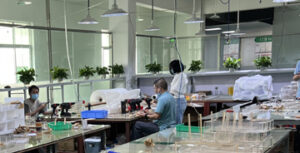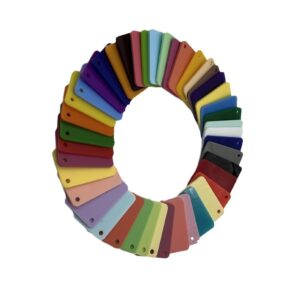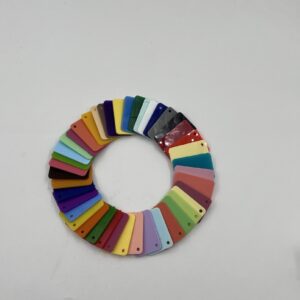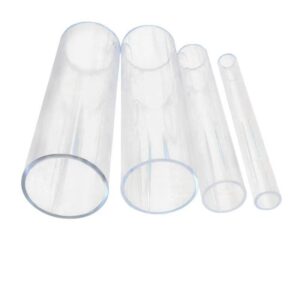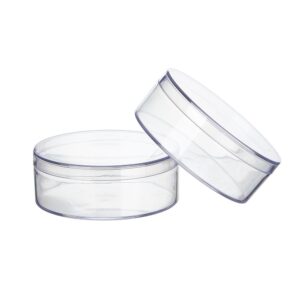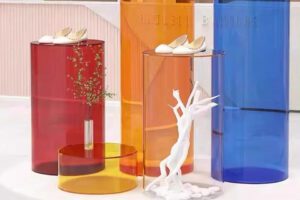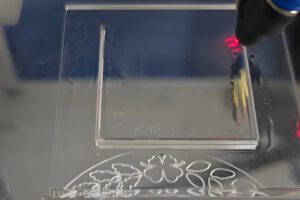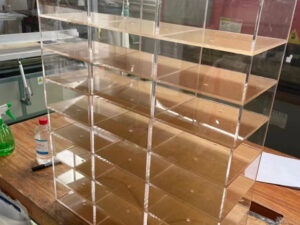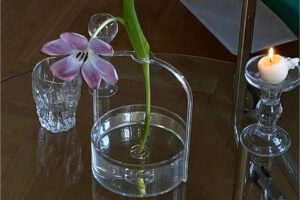Summary
The combination of acrylic and wood in mirror trays represents a fusion of modern aesthetics and traditional craftsmanship, capturing the interest of designers and homeowners alike. These trays serve both functional and decorative purposes, allowing for the organization of items while enhancing the visual appeal of a space. As home decor trends increasingly emphasize minimalism and personalization, mirror trays have emerged as versatile accent pieces that cater to diverse consumer tastes and lifestyle needs.
The notable popularity of acrylic and wood mirror trays stems from their unique properties. Acrylic is prized for its durability, lightweight nature, and high-gloss finish, making it an ideal choice for contemporary decor. Meanwhile, wood adds a warmth and richness that balances the sleekness of acrylic, resulting in visually striking designs that appeal to a wide array of design preferences, from modern to vintage. This innovative merging of materials reflects broader trends in home decor that prioritize sustainability, functionality, and aesthetic versatility, particularly as consumers become more eco-conscious.
However, the combination of acrylic and wood in mirror trays is not without its challenges and controversies. While acrylic is celebrated for its scratch and stain resistance, concerns regarding its potential for cracking and yellowing over time necessitate careful handling and maintenance practices. Additionally, the environmental impact of acrylic production raises questions about sustainability in the context of home decor trends. As such, discussions around the balance of style, utility, and environmental responsibility continue to shape the discourse surrounding these innovative design pieces.
Ultimately, the creation of mirror trays that integrate acrylic and wood not only reflects a rich history of design evolution but also addresses the changing tastes and values of modern society, encapsulating the spirit of contemporary home decor trends that celebrate both beauty and practicality.
Table of Contents
History
The use of trays in home decor can be traced back to ancient civilizations, where they served both functional and aesthetic purposes. Traditionally, trays were crafted from various materials, including wood and metal, to accommodate the needs of serving and displaying items. As design evolved, so did the materials used, leading to the incorporation of reflective surfaces like glass and acrylic in modern tray designs, particularly mirror trays.
In recent decades, the combination of acrylic and wood has gained popularity in the creation of mirror trays. Acrylic is celebrated for its durability, sleekness, and modern appeal, while wood brings a classic, customizable element to the design. This merging of materials has allowed designers to experiment with styles that range from contemporary to vintage, appealing to diverse consumer tastes. The trend towards using mirror trays as both functional items and decorative pieces became particularly prominent in the late 20th and early 21st centuries. As home decor styles shifted towards minimalism and personalization, mirror trays emerged as a versatile accent that could enhance the aesthetics of any space while offering practical benefits, such as organizing and serving.
Moreover, the reusability of high-quality acrylic trays has aligned with growing eco-consciousness among consumers, further solidifying their place in modern home decor. Their lightweight yet sturdy nature makes them suitable for various occasions, from casual family gatherings to more formal events, demonstrating the evolving utility of mirror trays in contemporary settings.
Today, mirror trays crafted from a combination of acrylic and wood not only reflect light and beauty but also embody a rich history of design evolution that caters to the changing tastes and values of society.
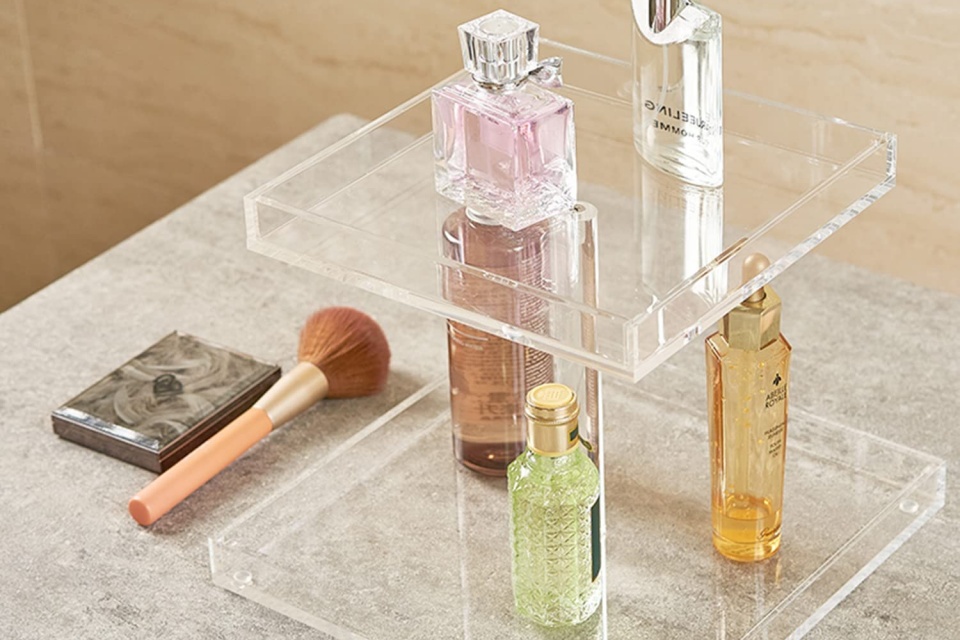
Materials
Combining acrylic and wood in the design of mirror trays creates a unique aesthetic appeal and functional versatility. The materials selected for these trays contribute to their durability, ease of maintenance, and overall visual impact.
Acrylic
Acrylic is a popular choice for contemporary decor due to its sleek look and high-gloss finish. High-quality cast acrylic, which is 5mm thick with polished edges, is often used for its strength and clarity. Acrylic trays are lightweight, making them easy to handle and transport, and they come in various colors and styles to match different decor themes. Additionally, acrylic is known for its scratch and stain resistance, ensuring that the trays maintain their appearance over time. However, care should be taken as acrylic can crack if mishandled and may yellow with prolonged exposure to direct sunlight.
Wood
Wood adds warmth and natural beauty to acrylic trays. Commonly used types of wood include maple and other hardwoods, which are favored for their durability and aesthetic qualities. Wooden trays often require maintenance with food-safe mineral oils or beeswax to protect the finish and enhance longevity. The combination of wood with acrylic allows for the creation of trays that not only serve practical purposes but also elevate the design of any setting.
Combination of Acrylic and Wood
The integration of acrylic and wood in mirror trays offers a visually striking contrast. Acrylic can be used for the tray’s surface or accents, while wood provides a sturdy base or frame. This combination not only enhances the aesthetic but also leverages the functional benefits of both materials, creating trays that are stylish yet practical for serving or organizing items. When combining these materials, attention to detail in the design and finish can result in a sophisticated product that complements various decor styles, from modern to traditional.
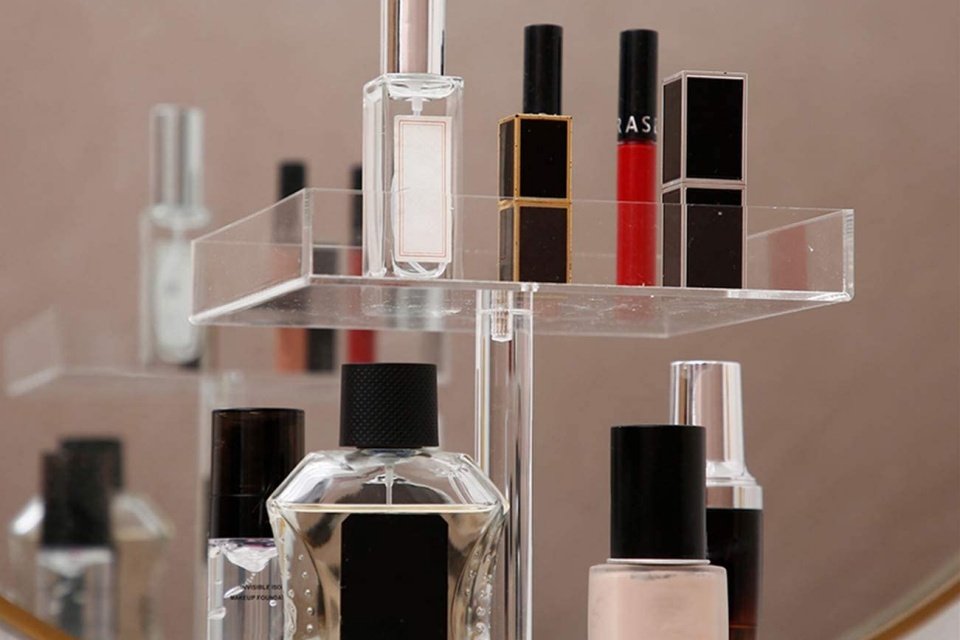
Design Principles
Visual Harmony
When combining materials such as acrylic and wood in mirror trays, achieving visual harmony is essential. The reflective quality of acrylic mirrors can enhance light and create a sense of brightness, making spaces feel more open and airy. To achieve this, consider using shapes and patterns that complement both materials. For instance, curved wooden elements can soften the sharp lines of acrylic, creating a balanced aesthetic that resonates with the surrounding decor.
Layering Techniques
Layering different textures and heights is a key principle in design. In the context of acrylic and wood mirror trays, placing smaller decorative items in front of larger pieces can add depth and interest to the arrangement. This technique allows the reflective surface of the acrylic to enhance the layered look, making the display more dynamic. Incorporating contrasting materials, such as soft fabrics alongside the polished surface of acrylic and the warmth of wood, can also create a cohesive and visually appealing setup.
Seasonal Adaptability
Designing with the concept of seasonal adaptability in mind can keep the decor feeling fresh and relevant throughout the year. By incorporating seasonal elements, such as flowers or thematic decorations, into the acrylic and wood mirror trays, one can create an inviting atmosphere that changes with the seasons. This adaptability not only adds to the aesthetic appeal but also encourages a personal touch in home styling, allowing individuals to express their creativity and keep their spaces engaging.
Preventive Measures for Longevity
To maintain the integrity of both acrylic and wood materials, it’s important to implement preventive measures that protect against wear and damage. For instance, avoiding sharp or heavy objects on the acrylic surface can prevent scratches and indentations, while also ensuring that wooden elements remain unscathed. Regular maintenance, including a cleaning schedule, is vital to keep the mirror trays looking their best and to prevent dust and stains from accumulating over time.
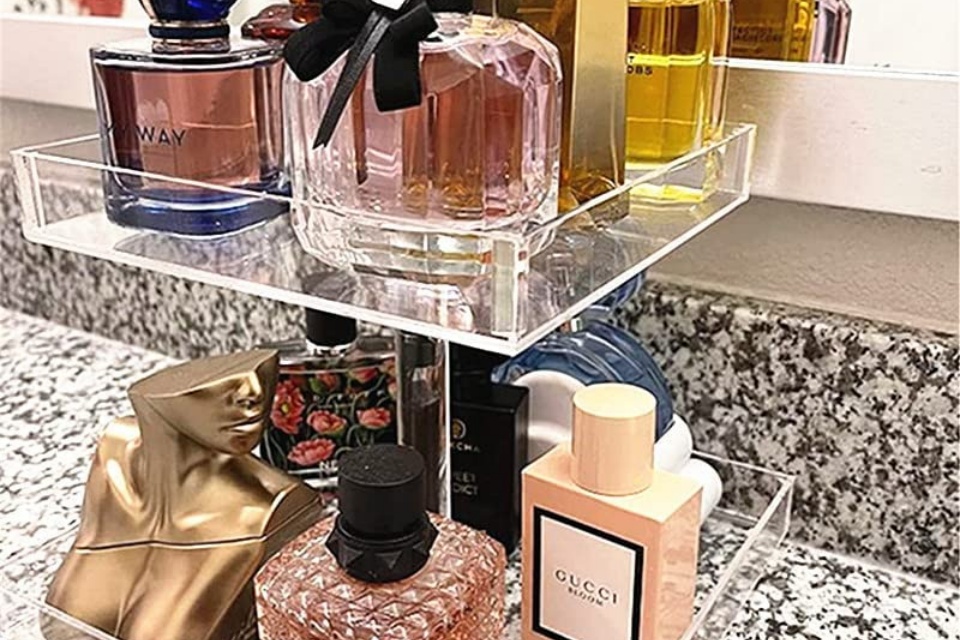
Manufacturing Process
Overview
The manufacturing process of combining acrylic and wood to create mirror trays involves several key steps, each designed to ensure both functionality and aesthetic appeal. The use of acrylic offers lightweight durability, while wood adds a classic touch and structural integrity to the design.
Material Preparation
Before assembly, the materials must be adequately prepared. For wooden components, drilling holes for handles is essential, as seen in the construction of a wood tray, where the handles are attached prior to the final assembly. This ensures a stable attachment and allows for a streamlined assembly process. For acrylic components, surface preparation is crucial. It is recommended to inspect the quality and clarity of the acrylic sheets to avoid defects that could impact the final product. Additionally, prior to any cutting, the acrylic should be stored with factory-applied masking to prevent scratches during handling.
Cutting Techniques
Acrylic mirror sheets can be cut using various methods depending on the desired outcome. For straight cuts on sheets up to 3 mm, a scoring knife can be used, while thicker sheets may require a circular saw equipped with an acrylic blade. For intricate designs, a laser cutter is recommended, as it provides precision and clean edges. Proper cutting techniques ensure a smooth edge that enhances the final finish.
Polishing and Finishing
The finishing process significantly impacts the aesthetic quality of the tray. Polishing compounds play a critical role; a fast-cutting compound followed by a high-luster compound is ideal for achieving a reflective surface on acrylic edges. For wooden surfaces, decisions regarding finishes, such as sealers, stains, or paints, are made to complement the acrylic’s sheen and protect the wood from wear.
Assembly
Once all components are prepared and finished, assembly begins. The acrylic mirror is typically mounted onto a wooden base, which provides support and enhances the tray’s visual appeal. Care must be taken to ensure that the acrylic is aligned correctly to avoid misalignment that could affect usability. Additionally, the integration of handles, which are pre-drilled and attached to the wood, allows for ease of use while adding a design element to the tray.
Quality Control
After assembly, the trays undergo a quality inspection to check for defects such as scratches, clarity issues, or alignment problems. This step is essential to ensure that the final product meets the desired quality standards before reaching the consumer. Brands with established reputations often have rigorous quality control processes to maintain their standards and customer satisfaction.
Applications
Sensory Play and Educational Use
Acrylic mirror trays are ideal for sensory play, providing children with an enclosed space to explore reflections, faces, and various objects. This interactive experience encourages observational skills and creativity in a safe environment, making them a valuable addition to classrooms and play areas. When used in educational settings, these trays can help keep activities organized and contained, with features like a 0.8-inch outer rim that prevents spills and messes, fostering a focused learning experience.
Home Decor and Organization
In home decor, acrylic mirror trays serve both functional and aesthetic purposes. They can be used to create decorative displays that organize everyday items such as books, magazines, and remote controls, enhancing the overall cohesiveness of living spaces. For example, placing a mirror tray on a coffee table or console table can transform a cluttered surface into an elegant arrangement, showcasing candles, flower vases, or other decorative elements. Additionally, trays can be creatively used as centerpieces in dining settings, adding a touch of sophistication and visual appeal to table arrangements during events.
Event and Wedding Decor
When planning special events such as weddings, acrylic mirror trays are versatile decor pieces that contribute to the overall ambiance. They can enhance table settings, providing a reflective base for candle votives or floral arrangements, which captivates guests and creates a stunning visual effect. Their ability to blend seamlessly with various color schemes and styles makes them a popular choice for event planners looking to elevate their decor with elegance.
Customization and Design Opportunities
Acrylic mirror trays can be customized in various shapes and sizes to fit specific design visions. They are available in a range of whimsical shapes, making them suitable for children’s rooms or themed spaces, while also providing a modern touch to adult interiors. This flexibility allows designers and DIY enthusiasts to explore creative applications, from enhancing personal spaces to crafting unique art installations.
Trends
The use of mirror trays in home decor has seen a surge in popularity as homeowners and decorators explore creative ways to combine materials and elevate their spaces. The trend emphasizes the blending of different textures, such as acrylic and wood, to create visually appealing arrangements that are both functional and stylish. Mixing soft fabrics with polished metals or acrylics can yield a unique balance that enhances the overall aesthetic of a room.
Material Combinations
The versatility of materials plays a crucial role in current styling trends. Designers and enthusiasts are increasingly drawn to the contrast between the sleekness of acrylic and the warmth of wood. This combination not only adds depth to the decor but also contributes to a cohesive look that feels curated and intentional. Using decorative boxes and other elements to introduce height and dimension is a common practice, allowing for a more dynamic arrangement on mirror trays.
Seasonal Adaptability
Seasonal decorating has become an exciting aspect of using mirror trays, as it encourages decorators to switch up their styles throughout the year. Many have found joy in layering various materials to reflect the changing seasons, such as integrating autumnal hues or cozy textiles during the fall. This adaptability not only refreshes the decor but also allows individuals to express their creativity and stay engaged with their home environment.
Practical Applications
Beyond aesthetics, there is a growing emphasis on the functionality of mirror trays. As users seek to maximize both beauty and utility, the incorporation of trays for organization and display has become commonplace. This trend highlights the importance of choosing high-quality materials that not only enhance visual appeal but also ensure durability and longevity in everyday use.
Care and Maintenance
Proper care and maintenance of acrylic and wood mirror trays are essential for ensuring their longevity and aesthetic appeal. Both materials require specific cleaning techniques and regular maintenance practices to preserve their integrity and functionality.
Acrylic Tray Maintenance
Acrylic trays are lightweight and resistant to scratches and stains, making them popular choices for serving and decorative purposes.
Cleaning When cleaning acrylic trays, use a solution of mild soap or detergent mixed with lukewarm water. Apply the solution with a soft cloth or sponge, avoiding abrasive materials that could scratch the surface. After wiping the tray, rinse with clean water and dry it with a microfiber cloth to prevent streaks and maintain its shine. Regular inspection of the tray for any signs of damage, such as cracks or yellowing, is also advisable.
Preventing Damage To prevent potential cracking, avoid using heavy objects on acrylic trays and store them properly to reduce stress on the material. When not in use, store acrylic trays flat and covered to prevent dust accumulation and minimize exposure to sunlight, which can lead to discoloration over time.
Wood Tray Maintenance
Wooden trays require different care methods to ensure their longevity. Regular cleaning and proper storage are key to preventing warping and maintaining the wood’s natural beauty.
Cleaning Use a mild soap and water solution to clean wooden trays. It is important to avoid soaking the trays in water, as excess moisture can warp the wood. Instead, use a soft cloth to wipe down the surface, and thoroughly dry the tray after cleaning to prevent moisture damage.
Care Tips In addition to regular cleaning, wooden trays should be stored in a dry environment and away from direct sunlight to prevent fading and warping. Applying a food-safe wood conditioner periodically can also help maintain the finish and prevent the wood from drying out.
By adhering to these care and maintenance guidelines, both acrylic and wood mirror trays can retain their aesthetic appeal and functionality, enhancing your home décor for years to come.


